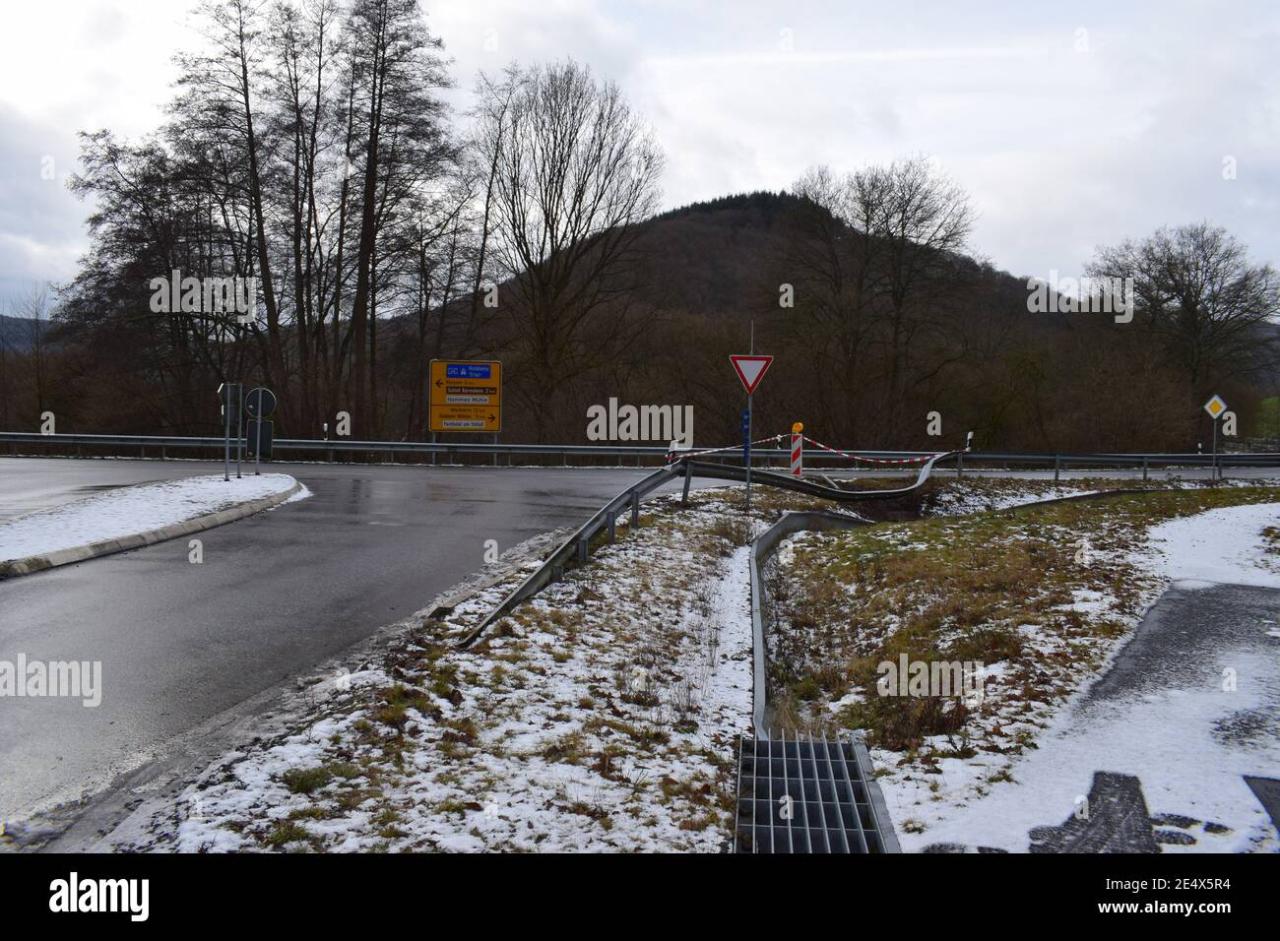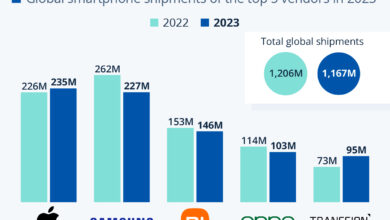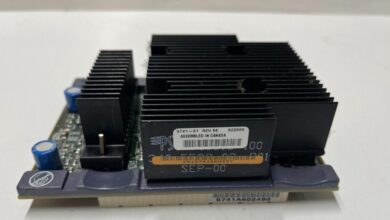Breaking the Speed Barrier The Frontside Bus Bottleneck
Breaking the speed barrier the frontside bus bottleneck is a critical challenge in computer architecture. This bottleneck, a historical limitation, still impacts modern systems. We’ll explore its definition, impact on performance, potential solutions, the role of technological advancements, and illustrative scenarios. Understanding this bottleneck is key to designing faster, more efficient computer systems.
The front-side bus, a crucial component in older computer architectures, often becomes a bottleneck when trying to push the limits of performance. This limitation arises from its architectural design, which can restrict the flow of data between different system components. This bottleneck significantly impacts system performance, especially in demanding applications.
Defining the Bottleneck
The relentless pursuit of faster computers often hits a wall, a bottleneck that hinders progress. This “frontside bus bottleneck,” a historical impediment to processing speed, remains relevant in modern computing, despite architectural advancements. Understanding its origins and characteristics is crucial to appreciate the ongoing challenges in pushing the boundaries of computing performance.The “frontside bus bottleneck” refers to a performance limitation in computer architectures where the speed of communication between the CPU and other components, primarily memory, is significantly slower than the CPU’s processing speed.
This fundamental mismatch creates a bottleneck, limiting overall system performance. The historical context of this limitation lies in the early days of PC architecture, where the bus served as the primary communication channel. Modern systems, while employing more sophisticated communication protocols, still face analogous limitations in certain scenarios.
Historical Context and Relevance
The initial design of personal computers relied heavily on a shared bus, often called the “frontside bus,” for communication between the CPU and peripherals, including RAM. This architecture, while functional, suffered from a critical limitation: the bus’s bandwidth was insufficient to keep pace with the ever-increasing processing power of the CPU. This fundamental incompatibility created a performance bottleneck. While modern systems have moved away from the simple, shared bus architecture, the fundamental principle of a potential communication speed mismatch between the CPU and other components still holds true.
The impact of this bottleneck can be seen in the evolution of computer architecture, driving the development of more sophisticated communication protocols and caching strategies.
Architectural Limitations
The fundamental limitation lies in the physical constraints of the shared communication channel. The “frontside bus” is a single pathway for all data transfers. As CPU speeds increased, the bus’s inherent limitations became more pronounced. Multiple requests for data and instructions contended for the same pathway, leading to delays and inefficiencies. The bus’s bandwidth became a limiting factor.
Comparison with Other Performance Limitations
Other performance limitations in computer systems include disk I/O bottlenecks, network bandwidth limitations, and insufficient memory capacity. These limitations often differ in their nature and impact. Disk I/O bottlenecks arise from the mechanical nature of hard drives, while network bandwidth limitations stem from the constraints of communication protocols. Insufficient memory capacity results in the need for more extensive memory systems.
The “frontside bus bottleneck,” however, stems from the speed mismatch between the CPU’s processing capability and the communication pathway to the other components.
Key Components Affected
- CPU: The central processing unit, the heart of the system, is the primary source of requests and the recipient of results. Its processing power is often significantly greater than the bandwidth of the communication channels it utilizes.
- RAM (Random Access Memory): The primary memory, crucial for storing active data and instructions, is frequently a significant source of contention for the bus, especially in high-performance applications.
- Peripheral Devices: Devices like graphics cards, network interfaces, and hard drives can all contribute to the bus load, potentially causing bottlenecks.
| Component | Impact of Bottleneck |
|---|---|
| CPU | Reduced processing throughput due to waiting for data transfers. |
| RAM | Increased latency in accessing memory, impacting overall system responsiveness. |
| Peripheral Devices | Delayed responses from peripheral devices, slowing down system operations. |
Impact on Performance
The frontside bus bottleneck, a crucial architectural constraint in modern computer systems, significantly impedes the ability to break speed barriers. This limitation arises from the inherent trade-offs between processing speed, communication bandwidth, and cost-effectiveness. Overcoming this bottleneck is paramount for unlocking higher performance in a variety of applications.The bottleneck manifests as a critical performance limitation, especially when attempting to achieve higher clock speeds.
The communication latency between the CPU and the memory system, through the frontside bus, becomes a significant hurdle. This latency directly impacts the overall throughput of the system.
Breaking the speed barrier of the front-side bus bottleneck is crucial for faster data transfer. Recent advancements, like Lexar’s new 4 GB CompactFlash card, which promises significant improvements in storage capacity , are pushing the boundaries of what’s possible. This, in turn, directly impacts the performance limitations of the front-side bus bottleneck, potentially leading to a new generation of faster devices.
CPU Cycle Impact
The frontside bus’s limited bandwidth restricts the rate at which data can be transferred between the CPU and memory. This directly translates to an increased number of CPU cycles required for each memory access. Consequently, operations that heavily rely on memory, such as complex calculations or large data manipulations, experience significant performance degradation. For example, a computationally intensive task might take 1000 cycles to complete without the bottleneck, but with the bottleneck, it might take 2000 cycles, effectively doubling the time needed.
Memory Access Time Impact
The frontside bus bottleneck significantly impacts memory access times. Longer transfer times increase the delay between the CPU’s request for data and the actual retrieval from memory. This is particularly evident in applications demanding frequent memory access, such as high-resolution graphics rendering. Rendering complex 3D models becomes slower as the CPU spends more time waiting for memory data.
This delay is also pronounced in systems requiring continuous data streams, such as video processing, where smooth playback depends on fast memory access.
Real-World Application Examples
Consider a high-performance video editing application. The frontside bus bottleneck can manifest in slower frame rendering, resulting in noticeable lags or stutters during playback or editing operations. Similarly, in scientific simulations requiring extensive calculations, the bottleneck leads to longer processing times, potentially impacting the speed of achieving desired results. This becomes more apparent when working with large datasets.
Performance Degradation in Different Scenarios
The impact of the bottleneck varies depending on the specific task. High-resolution graphics rendering, with its intensive memory demands, suffers significantly. Complex calculations, needing numerous memory reads and writes, also experience substantial performance degradation. Conversely, tasks with less memory access, such as simple text processing, show minimal impact.
Relationship Between Bottleneck and Performance Degradation
| Task | Memory Access Frequency | Performance Degradation (Estimated) |
|---|---|---|
| High-Resolution Graphics Rendering | High | Significant (e.g., 20-50% reduction in frame rate) |
| Complex Scientific Calculations | High | Moderate to Significant (e.g., 10-30% increase in processing time) |
| Simple Text Processing | Low | Minimal |
| Database Queries | Medium | Moderate (e.g., 5-15% increase in query time) |
This table illustrates the correlation between memory access frequency and the estimated performance degradation caused by the frontside bus bottleneck in various tasks. The figures are estimations, and actual degradation can vary based on the specific implementation and hardware configurations.
Potential Solutions
Breaking the speed barrier often hinges on overcoming bottlenecks. The “frontside bus bottleneck” presents a significant impediment, and its mitigation requires creative and strategic solutions. These solutions must consider the architectural context and the potential trade-offs involved. A comprehensive approach will be necessary to achieve optimal performance improvements.Addressing the bottleneck requires a multifaceted strategy that balances architectural modifications with innovative approaches.
This involves a careful evaluation of existing infrastructure, a deep understanding of the limitations, and the development of tailored solutions that are both effective and feasible.
Breaking the speed barrier on the front-side bus bottleneck hinges on a lot of factors, and a recent split decision on SCO impact response ( split decision on sco impact response ) might offer some interesting insights. While the details of that decision are still unfolding, it could potentially unlock new avenues for streamlining the whole system. Ultimately, we’ll need a more integrated approach to truly break the front-side bus bottleneck.
Architectural Changes
Architectural changes are fundamental to resolving the frontend bus bottleneck. Modifications in the bus interface design and implementation are critical. This could involve optimizing data transfer protocols to reduce latency and enhance bandwidth.
- Enhanced Bus Protocol: Implementing a new bus protocol with lower overhead and faster data transfer rates can significantly reduce delays. For example, a protocol designed specifically for high-speed data transfers, like a custom PCIe variant, could improve performance. This approach would require extensive re-design of the bus infrastructure.
- Modular Bus Architecture: A modular approach allows for independent scaling and upgrading of different components. This can isolate bottlenecks and improve performance, potentially avoiding a full system redesign. Existing systems could be incrementally improved with this approach.
- Caching Strategies: Implementing intelligent caching mechanisms on the front-end can reduce the number of requests to the main bus. This approach could dramatically reduce the latency associated with frequently accessed data.
Innovative Approaches
Beyond architectural changes, innovative approaches could bypass or circumvent the bottleneck altogether. These solutions often involve alternative communication pathways or data handling mechanisms.
- Distributed Processing: Distributing processing tasks across multiple units can alleviate the pressure on the main bus. This method distributes the load, effectively reducing the bus’s workload. This approach is especially suitable for tasks that can be broken down into smaller, independent parts.
- Asynchronous Communication: Using asynchronous communication methods, where requests are handled independently and responses are not immediately expected, can reduce the bus’s dependency on synchronous data flow. This approach allows for better concurrency and responsiveness, but introduces complexity in data management.
- Offloading Tasks: Offloading specific tasks, like computationally intensive operations, to specialized hardware units can relieve the front-end bus from carrying these burdens. This approach is especially valuable for scenarios where certain tasks significantly impact performance.
Comparative Analysis
Different solutions present varying degrees of impact and trade-offs. A careful comparison is essential to select the most suitable approach.
| Solution | Potential Impact | Trade-offs |
|---|---|---|
| Enhanced Bus Protocol | Significant performance improvement, potentially exponential speedups | High development cost, substantial infrastructure overhaul required |
| Modular Bus Architecture | Incremental performance gains, improved flexibility | Requires careful planning and potential complexity in integration |
| Caching Strategies | Reduced latency for frequently accessed data, potentially substantial performance gains | Requires careful design to avoid cache misses and potential storage overhead |
| Distributed Processing | Improved throughput and reduced latency for large datasets | Requires more complex system architecture and potentially higher hardware costs |
| Asynchronous Communication | Increased concurrency, improved responsiveness | Increased complexity in data management and synchronization |
| Offloading Tasks | Improved performance for specific tasks, reduced bus load | Requires specialized hardware, potentially increasing cost and complexity |
Technological Advancements

The front-side bus (FSB) once held sway as the primary communication artery connecting the CPU to other components in a computer system. However, the rise of more sophisticated architectural designs has largely diminished its importance. Understanding how these advancements have impacted the relevance of the FSB is crucial to appreciating the evolution of computer performance.The evolution of computer architecture has been a continuous quest to optimize performance.
The FSB, while a significant step forward at the time, presented limitations in terms of scalability and bandwidth. Modern architectures have successfully addressed these limitations by adopting more efficient and flexible approaches.
Impact on Processor Architecture
The FSB’s role in modern computer architectures has significantly diminished due to advancements in processor design. Multi-core processors, for example, have multiple processing units on a single chip. This distributed processing architecture, with each core having its own dedicated resources, has rendered the centralized bottleneck of the FSB less critical. Data exchange between cores now frequently occurs on-chip, bypassing the FSB altogether.
Furthermore, the increasing integration of memory controllers directly onto the processor die further reduces the reliance on the FSB for memory access.
Cache Hierarchies
Cache hierarchies, multiple levels of memory caches situated between the processor and main memory, play a vital role in mitigating the FSB bottleneck. These caches store frequently accessed data, significantly reducing the need to retrieve information from main memory, which was previously a major bottleneck on the FSB. The increased cache sizes and optimized caching algorithms in modern processors have minimized the frequency of FSB interactions, thereby reducing the bottleneck’s impact.
Data transfer between different cache levels also occurs within the processor, again reducing reliance on the FSB.
Evolution of Processor Architectures
The table below illustrates the evolution of processor architectures and the declining role of the FSB.
| Processor Architecture | Key Features | Front-Side Bus (FSB) Role |
|---|---|---|
| Early PC (e.g., Pentium II) | Single-core processor, relatively slow clock speeds, limited on-chip cache. | Crucial for communication between CPU, memory, and peripherals. |
| Pentium 4/Athlon | Higher clock speeds, introduction of Hyper-Threading (some models). | Still a primary communication path, but with increased bandwidth requirements. |
| Core 2 Duo/Quad | Multi-core design, increased on-chip cache. | Reduced importance; on-chip communication becoming more prevalent. |
| Intel Core i series | Further advancements in multi-core design, integrated memory controllers, and advanced caching. | Marginal or no role; replaced by faster internal interconnects. |
| Modern Processors (e.g., AMD Ryzen) | Chiplets, heterogeneous integration, massive cache hierarchies. | Non-existent; data movement primarily handled internally. |
Future Advancements
Future advancements in computer design will likely further diminish the significance of the FSB. As chip integration continues to increase, and as new interconnect technologies emerge, the reliance on external buses like the FSB will likely become obsolete. For instance, the trend towards chiplets, where multiple dies are integrated onto a single package, will significantly alter the landscape of inter-component communication, rendering the FSB redundant.
Case Studies and Examples
Breaking the speed barrier often hinges on overcoming the “frontside bus bottleneck.” This bottleneck, as we’ve explored, can severely limit system performance. Examining successful case studies provides valuable insights into architectural and design choices that enabled these breakthroughs. Conversely, understanding examples where the bottleneck remained a significant limitation highlights areas for further improvement.
Breaking the speed barrier of the front-side bus bottleneck is crucial, but it’s also tied to the larger issue of data preservation. We need to proactively upgrade and archive the ongoing threat of data extinction upgrade and archive the ongoing threat of data extinction to ensure these crucial performance gains aren’t lost to time. Ultimately, overcoming the front-side bus bottleneck relies on a robust and forward-thinking approach to data management.
Successful Overcoming of the Bottleneck, Breaking the speed barrier the frontside bus bottleneck
Successful systems have demonstrated that overcoming the bottleneck is achievable. These systems demonstrate that careful design choices can drastically improve performance. Key architectural and design choices often involve decoupling or distributing the front-side bus’s workload.
- High-Performance Computing Clusters: Many high-performance computing (HPC) clusters have successfully addressed the bottleneck by employing non-uniform memory access (NUMA) architectures. These architectures allow for the distribution of memory access across multiple nodes, enabling better performance by minimizing contention for shared resources. The NUMA architecture is designed to handle the distributed nature of tasks across multiple nodes, thus improving performance by minimizing contention for the front-side bus.
This is a significant advancement compared to traditional shared-memory architectures, which often suffer from the front-side bus bottleneck.
- Modern GPUs: Graphics Processing Units (GPUs) have evolved to tackle this bottleneck by utilizing specialized architectures and parallel processing capabilities. GPUs often feature multiple processing cores that can simultaneously execute instructions, thereby reducing the load on a single front-side bus. This parallel processing, combined with specialized hardware, allows for an efficient handling of tasks. By distributing the workload across multiple cores, the front-side bus bottleneck is significantly alleviated.
This is a dramatic improvement compared to older CPU architectures that often struggle with demanding workloads.
Architectural Approaches in Case Studies
Analyzing these approaches offers insights into the design choices that address the limitations of the bottleneck. This analysis reveals different strategies that can lead to successful solutions.
| System Type | Architectural Approach | Impact on Performance |
|---|---|---|
| High-Performance Computing Clusters | Non-uniform Memory Access (NUMA) | Significant performance improvements due to distributed memory access and reduced contention on the front-side bus. |
| Modern GPUs | Specialized architectures and parallel processing | Massive performance gains from parallel processing, allowing for efficient handling of demanding tasks, while distributing the load across multiple cores. |
| Multi-core CPUs | Increased number of cores and improved cache coherence protocols. | Improved performance by spreading workload across multiple cores, and enhanced data sharing between cores, resulting in better efficiency. |
Systems with Persistent Bottleneck Limitations
Despite advancements, some systems continue to face significant limitations due to the front-side bus bottleneck. These systems often suffer from limitations in scalability and performance.
- Older PC Architectures: Older personal computer architectures frequently encountered the bottleneck due to the limited bandwidth of their front-side buses. These systems were not designed for the demanding workloads of modern applications, leading to performance degradation.
- Systems with I/O-bound Tasks: Systems heavily reliant on I/O operations, such as those handling massive datasets or intensive disk access, often experience significant delays. This is because the front-side bus may become a bottleneck for the communication between the CPU and the I/O devices.
Illustrative Scenarios

Frontside bus bottlenecks, while often subtle, can significantly impact application performance, especially in high-performance computing environments. Understanding how these bottlenecks manifest in real-world scenarios is crucial for effective mitigation strategies. This section delves into hypothetical scenarios, showcasing the impact and outlining potential solutions.
High-Performance Application Example
A high-performance financial trading application processes millions of transactions per second. Its core functionality relies on rapidly exchanging data between different components. The front-side bus, acting as the central communication highway, is vital for this process.
Scenario 1: Unoptimized Data Transfer
The application’s initial design relied on a straightforward data transfer mechanism over the front-side bus. This simple approach, while initially functional, proved inadequate as the volume of transactions escalated. Data transfer times began to noticeably increase, leading to delays in critical decision-making within the trading system. This delay directly translates to a reduction in profit potential and increased risk of erroneous trades.
Scenario 2: Overloaded Front-Side Bus
The same trading application now employs multiple threads for handling diverse operations. While this improves responsiveness in some areas, the concurrent data transfer demands overwhelm the front-side bus’s capacity. This results in severe delays, impacting the application’s overall throughput and the ability to process critical data in real-time. The system experiences frequent stalls and “hiccups,” causing inaccuracies in the execution of trades.
Scenario 3: Inefficient Cache Management
The application now leverages a caching mechanism to reduce data transfer overheads. However, the cache management strategy proves inefficient. The cache frequently becomes fragmented and underutilized, resulting in frequent data fetches from main memory. This constant data transfer burden on the front-side bus diminishes the overall performance and leads to significant response times for the trading operations.
Alternative Solutions and Trade-offs
- Optimized Data Transfer Mechanisms: Implementing optimized data transfer protocols, such as employing message queues or specialized data structures, can significantly reduce delays. However, the implementation cost and potential complexity must be weighed against the anticipated performance gains. This often involves intricate programming and architecture changes.
- Wider Front-Side Bus: Upgrading to a wider front-side bus can handle more data simultaneously. This is a straightforward approach but often involves substantial capital expenditure. The increased bandwidth might not fully address the underlying issues if the application’s architecture isn’t optimized accordingly.
- Enhanced Cache Management: Employing sophisticated cache algorithms and strategies can significantly improve data retrieval efficiency. This might involve implementing a more complex cache management system, adding overhead to the application and requiring additional development effort.
Performance Outcomes
| Scenario | Initial Performance | Optimized Data Transfer | Wider Front-Side Bus | Enhanced Cache Management |
|---|---|---|---|---|
| Unoptimized Data Transfer | Low | Medium | Medium | High |
| Overloaded Front-Side Bus | Very Low | Medium | High | Medium |
| Inefficient Cache Management | Low | Medium | Medium | High |
Ending Remarks: Breaking The Speed Barrier The Frontside Bus Bottleneck
In conclusion, overcoming the front-side bus bottleneck has been a significant challenge in computer architecture. While historical limitations have been addressed by advancements in multi-core processors and caching, understanding the bottleneck’s impact on performance is essential. The evolution of computer architecture demonstrates how addressing these bottlenecks is crucial for breaking speed barriers in modern systems. Future advancements will undoubtedly continue to push the boundaries of computing performance.







